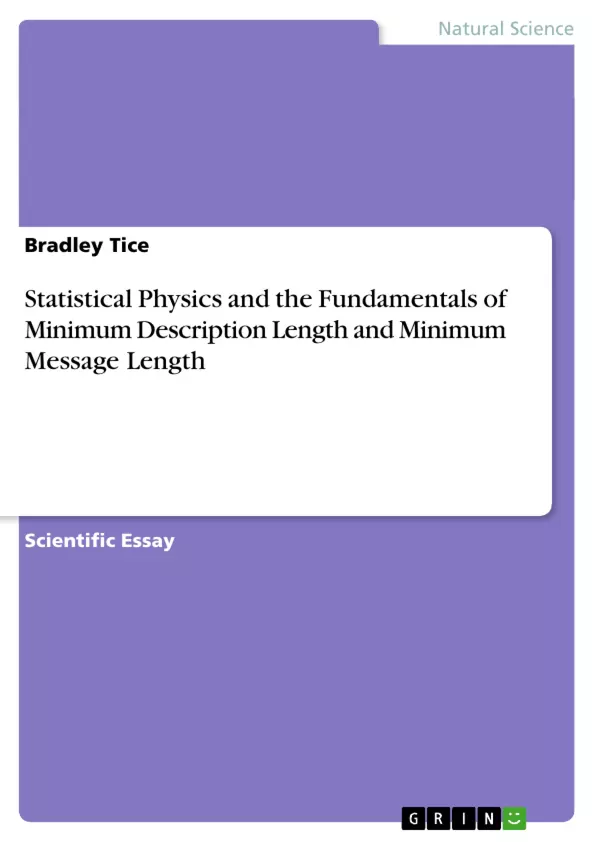The use of algorithmic complexity in compressing a random binary sequential string is used to redefine a measure of 'randomness' found using both Minimum Description Length, MDL, and Minimum Message Length, MML, that changes the very nature of thier measures of a binary sequential string. The 'compressible' random binary sequential string was discovered in 1998 by the author and this is the first application to both MDL and MML.
Inhaltsverzeichnis (Table of Contents)
- Abstract
- Preface
- The Table of Contents
- Introduction
- Minimum Message Length
- Minimum Description Length
- The Grammar of Form
- A Compression Engine
- A New Paradigm
- Conclusion
- Summary
- Notes
- References
- About the Author
Zielsetzung und Themenschwerpunkte (Objectives and Key Themes)
This monograph examines the compressibility of a traditional random binary segmental string compared to a 'summing engine' binary sequential string. It explores how the Minimum Message Length (MML) and Minimum Description Length (MDL) models can be applied to both systems, ultimately leading to a paradigm shift in the fundamental understanding of both MML and MDL.- The use of a 'summing engine' algorithm for compressing binary sequential strings
- The application of MML and MDL models to evaluate the compressed data
- The implications of the compression algorithm on the fundamental principles of both MML and MDL
- The shift in paradigm concerning the nature of randomness in data
- The potential applications and implications of the new understanding of data compression and its relationship to information theory
Zusammenfassung der Kapitel (Chapter Summaries)
- **Introduction:** This chapter introduces the central concept of the monograph: the compressibility of binary strings using a 'summing engine' algorithm. It also provides a brief overview of the Minimum Message Length (MML) and Minimum Description Length (MDL) models.
- **Minimum Message Length:** This chapter delves into the origins and fundamental principles of Minimum Message Length, emphasizing its close relationship to Minimum Description Length. It also highlights its Bayesian nature.
- **Minimum Description Length:** This chapter explores the origins and core principles of Minimum Description Length. It highlights the use of data regularity for data compression and its implications for model evaluation.
- **The Grammar of Form:** This chapter examines the concept of "grammar" in the context of data compression and the 'summing engine' algorithm, focusing on the relationship between the algorithm and the structure of compressed data.
- **A Compression Engine:** This chapter presents a detailed description of the 'summing engine' algorithm, explaining its operation and its ability to compress binary strings. It also discusses the potential applications of the algorithm.
- **A New Paradigm:** This chapter discusses the paradigm shift in understanding MML and MDL that arises from the application of the 'summing engine' algorithm. It explores the implications of the new paradigm for data compression and information theory.
Schlüsselwörter (Keywords)
This monograph focuses on the concepts of data compression, binary strings, minimum message length, minimum description length, 'summing engine' algorithm, information theory, and statistical physics. It explores the relationship between these concepts and their implications for understanding the nature of randomness and information.
Ende der Leseprobe aus 14 Seiten
- nach oben
- Arbeit zitieren
- Professor Bradley Tice (Autor:in), 2012, Statistical Physics and the Fundamentals of Minimum Description Length and Minimum Message Length, München, GRIN Verlag, https://www.hausarbeiten.de/document/205420
Blick ins Buch


